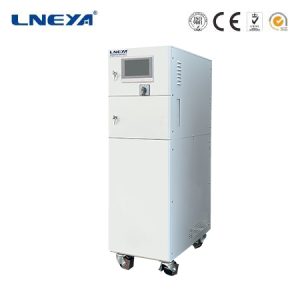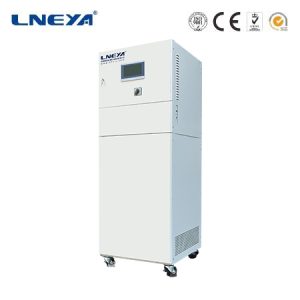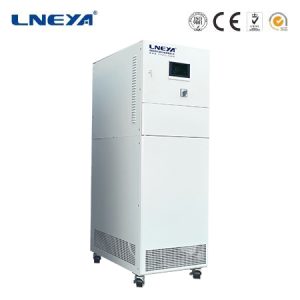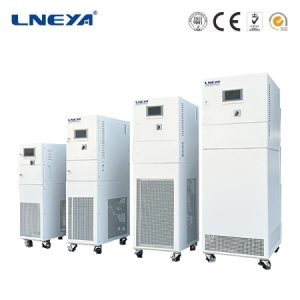Liquid Cooled Battery Energy Storage System
Contact us today for the perfect temperature control solution
The construction speed of energy storage devices is increasing rapidly, and the safety problems of energy storage devices are becoming more and more prominent. Energy storage devices need to work in a reasonable temperature environment. Maintaining a reasonable temperature operating environment can prevent potential safety hazards and accidents of the energy storage device, and can also ensure the stable operation of the energy storage device and achieve effective energy saving.
In related technologies, the cooling system exchanges heat with the energy storage device. When the ambient temperature is in a low-temperature environment (for example: when the ambient temperature is -30°C), the compressor of the cooling system is in a low-voltage protection shutdown state due to the low ambient temperature. . At this time, the system cannot operate normally. The existing cooling system adds a cooling circuit, such as using a radiator to cool down, to achieve the purpose of cooling the cooling water. This method adds a cooling circuit, resulting in an increase in the occupied space of the cooling system. It needs a huge space to set up the cooling system, and it needs to increase the corresponding pipelines, radiators, switch components (such as three-way valves, etc.), which increases the weight of the cooling system. At the same time, due to the increase of corresponding parts, the increase This reduces the risk of liquid leakage at joints between components, thereby increasing the risk of electric shock due to liquid leakage in the cooling system and reducing the safety of the cooling system.

For this reason, our company has developed a cooling system for energy storage devices. The cooling system of this energy storage device can ensure the smooth operation of the cooling system under low temperature refrigeration conditions. Compared with the existing technology, it can also simplify the structure of the cooling system and can also Improve cooling system safety.
Introduction of Energy Storage Liquid Cooling Technology
Energy storage liquid cooling technology is a heat dissipation technology for battery energy storage systems using liquid as the medium. Compared with the traditional air cooling method, the energy storage liquid cooling technology has a better heat dissipation effect, which can effectively improve the working efficiency and life of the battery system.
Energy storage liquid cooling technology is suitable for various types of battery energy storage systems, such as lithium-ion batteries, nickel-metal hydride batteries, and sodium-sulfur batteries. The application of this technology can help battery systems achieve higher energy density and longer service life, providing more reliable power support for various applications, such as automotive transportation, energy storage and renewable energy.
The energy storage liquid cooling system mainly includes a water cooling system, as well as a refrigeration cycle system, a cycle control system, and a water distribution pipeline system. These systems work together. The water cycle system of the water cooling system provides a water pressure, and then the refrigeration cycle The system discharges heat into the air through compression and refrigeration, and the control system cooperates with the EMS and BMS of the energy storage battery compartment to regulate the temperature, flow and pressure. This is the operating principle of the entire energy storage liquid cooling system.
Refrigeration Types of Liquid Cooling Technology
The basic components of the energy storage liquid cooling system include: liquid cooling plate, liquid cooling unit (heater optional), liquid cooling pipeline (including temperature sensor, valve), high and low voltage wiring harness; cooling liquid (ethylene glycol aqueous solution), etc. Since the specific heat capacity of liquid is much higher than that of gas, compared with common air cooling technology, liquid cooling can greatly improve the heat dissipation efficiency.
According to the way the coolant contacts the battery, it can be divided into direct liquid cooling (such as cold plate liquid cooling) and indirect liquid cooling (such as immersion liquid cooling). Among them, the cold plate liquid cooling belongs to the indirect contact liquid cooling technology, which dissipates heat through the contact between the cold plate with the cooling liquid and the equipment. One of the most widely used techniques in liquid cooling.
The other is direct contact liquid cooling technology, the more typical one is immersion liquid cooling, which refers to immersing the heating device in the cooling liquid, and the two are in direct contact to help the device dissipate heat. This technology can make greater use of the specific heat capacity of the liquid Large features, further improve the cooling efficiency.
Email: info@lneya.com WeChat ID: +8615251628237 WhatsApp: +86 17851209193
 LNEYA
LNEYA
 简体中文
简体中文


















































































